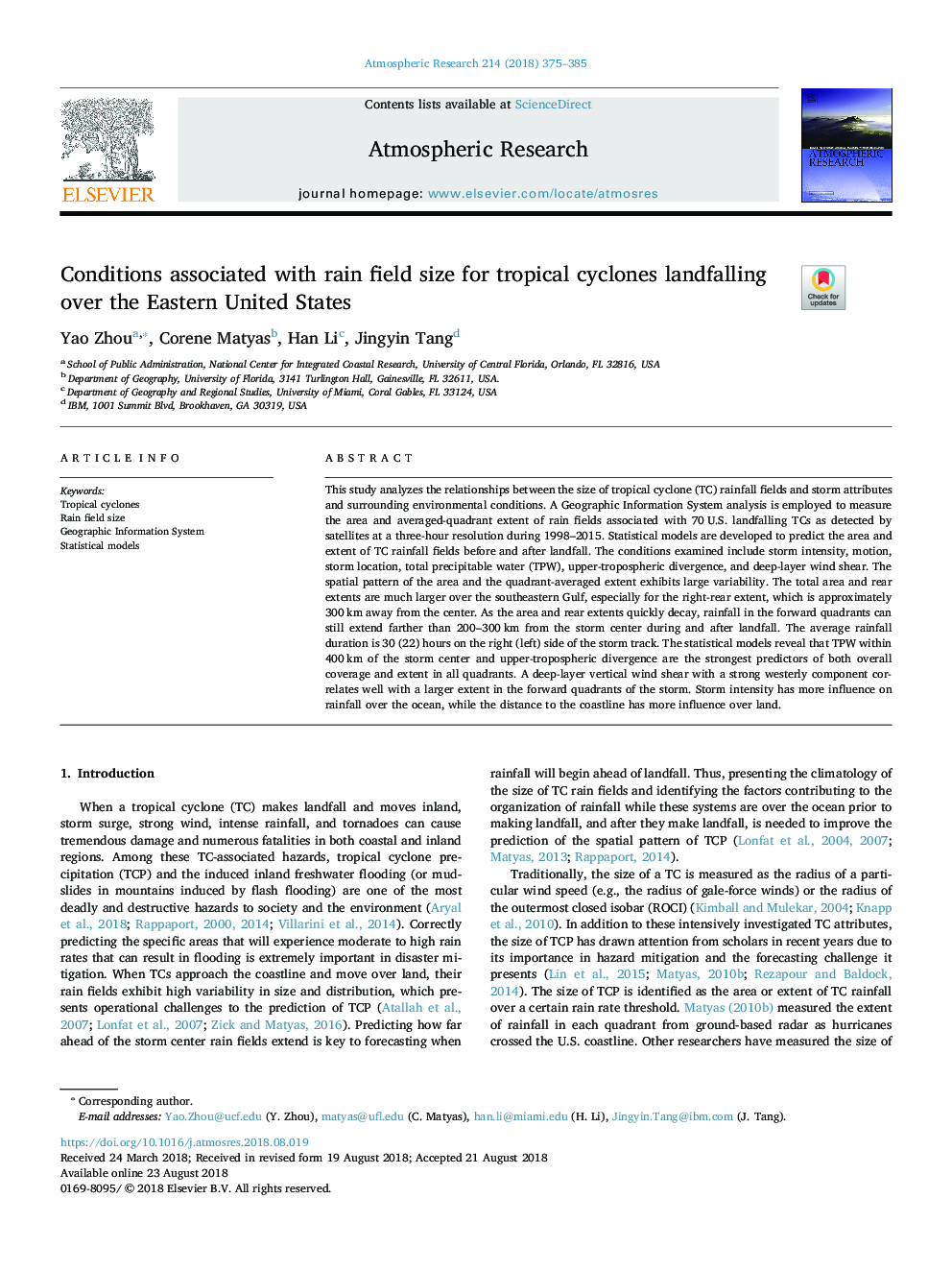| Article ID | Journal | Published Year | Pages | File Type |
|---|---|---|---|---|
| 10113935 | Atmospheric Research | 2018 | 11 Pages |
Abstract
This study analyzes the relationships between the size of tropical cyclone (TC) rainfall fields and storm attributes and surrounding environmental conditions. A Geographic Information System analysis is employed to measure the area and averaged-quadrant extent of rain fields associated with 70â¯U.S. landfalling TCs as detected by satellites at a three-hour resolution during 1998-2015. Statistical models are developed to predict the area and extent of TC rainfall fields before and after landfall. The conditions examined include storm intensity, motion, storm location, total precipitable water (TPW), upper-tropospheric divergence, and deep-layer wind shear. The spatial pattern of the area and the quadrant-averaged extent exhibits large variability. The total area and rear extents are much larger over the southeastern Gulf, especially for the right-rear extent, which is approximately 300â¯km away from the center. As the area and rear extents quickly decay, rainfall in the forward quadrants can still extend farther than 200-300â¯km from the storm center during and after landfall. The average rainfall duration is 30 (22) hours on the right (left) side of the storm track. The statistical models reveal that TPW within 400â¯km of the storm center and upper-tropospheric divergence are the strongest predictors of both overall coverage and extent in all quadrants. A deep-layer vertical wind shear with a strong westerly component correlates well with a larger extent in the forward quadrants of the storm. Storm intensity has more influence on rainfall over the ocean, while the distance to the coastline has more influence over land.
Related Topics
Physical Sciences and Engineering
Earth and Planetary Sciences
Atmospheric Science
Authors
Yao Zhou, Corene Matyas, Han Li, Jingyin Tang,
